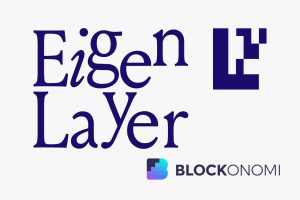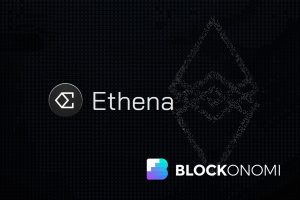Polygon ecosystem development and upcoming zkEVM launch add to MATIC’s bullish momentum

[ad_1]
Polygon Labs, the development and growth team for Polygon, announced that the beta version of its zero-knowledge Ethereum Virtual Machine (zkEVM) would launch on March 27, 2023. It’s possible that Polygon will enjoy a first-mover advantage in this space by launching a public mainnet before zkSync and Scroll.
Zk-based roll-up technology is accepted as the gold standard for scaling. The existing optimistic-based rollups like Arbitrum and Optimism have EVM capability but are less secure because they are “fraud-proof.” Malicious transactions on an Optimistic Rollup can stay valid for up to seven days or more before being reversed. Thus, giving an advantage to zk-technology.
Moreover, the Ethereum community’s focus on Liquid Staking Derivatives may shift toward layer-2 networks after the anticipated Shanghai upgrade in March. This is because the update following Shanghai, Ethereum Improvement Proposal 4844, will reduce the cost of L2 rollups by 10–100-fold. A working zk-based rollup solution will likely attract new projects to its ecosystem.
Polygon (MATIC) has built a strong bullish narrative in the market with the upcoming zkEVM launch. The team’s efforts in the Web3 space are promising and show signs of increasing activity. The growth in its decentralized finance (DeFi) ecosystem has stalled, which could likely stay this way for more extended periods.
Technically, the market structure for Polygon looks bullish. However, the recent 78% increase in MATIC’s price since the start of 2023 could see a correction as speculative buying cools down. Such a situation could possibly provide an ideal entry in MATIC for a swing trade.
Polygon’s DeFi sector has stalled, but Web3 activity is on the rise
Since the start of 2023, Polygon has witnessed a spike in its nonfungible token (NFT) activity, especially for low-cost gaming assets. According to data from Dune Analytics, the number of NFT sales on Polygon surpassed Ethereum for two consecutive months in December 2022 and January 2023. While Ethereum still leads in total volumes, Nansen’s NFT activity data shows that the minting and sale volume on Polygon has been picking up since the start of 2023.
Meta also chose Polygon as the base layer for minting digital collectibles on its social media app Instagram. This feature is currently in the limited testing phase but should see traction soon among the 1.28 billion Instagram users.
In November 2022, Matter Labs appointed the former gaming head of YouTube, Ryan Watt, to lead its gaming venture, Polygon Studios. Watt told Cointelegraph that Polygon’s Web3 strategy takes a holistic approach by incorporating “Web2 companies, including Starbucks, Adobe, Clinique and Stripe, to integrate Web3 functionality.”
Additionally, the blockchain houses the development of over 60 metaverse projects, including the leaders in The Sandbox, Decentraland and Somnium Space. Lastly, Polygon’s $450-million raise in February 2022 will likely provide the necessary tailwinds to continue development on the Web3 front.
On the other hand, the Ethereum sidechain’s growth in its DeFi sector has stalled. It could remain stressed due to the ongoing macroeconomic pressure and a regulatory crackdown on stablecoins.
The total liquidity across DeFi applications on Polygon has stayed below November 2022 levels, suggesting that users are still reluctant to interact with these protocols. Besides security risks, the decreasing yield across the DeFi space is also a prominent reason for the decline in activity.
In comparison, Arbitrum’s DeFi ecosystem has fared relatively better than most thanks to the anticipation around its token airdrop and active development.
Still, Polygon ranks fifth in total liquidity across DeFi platforms above Avalanche, Solana, Optimism and Fantom, which is encouraging. Favorable liquidity conditions are a crucial necessity for a prospering DeFi ecosystem, and Polygon can benefit from it when focus on DeFi picks up. Moreover, the launch of zkEVM may also attract DeFi development.
Investors are bullish on MATIC
Futures market data shows traders are bullish on MATIC, with an increase in open interest volume toward 2022 highs and a long-to-short ratio of 1.58. While a bullish outlook is encouraging, the prices may pull back to wipe out overleveraged positions.
The on-chain balance on exchanges suggests that not many investors moved their coins onto exchanges as the price surged from $0.75 to $1.25. It suggests confidence among buyers, who are unlikely to sell unless the price falls below $0.75 support.

Related: Solana (SOL) price rally could fizzle out due to weak fundamentals
However, the price could pull back toward the $1 support level as the Relative Strength Index (RSI) metric begins to tap resistance around the 65 level. The bullish momentum likely requires consolidation around the 50 RSI level before more upside.

The organic development of Polgyon’s NFT trading activity and bullish narrative building around zkEVM will likely continue to push MATIC’s price higher in 2023. Needless to say, a lot will depend on the price action of market leaders in Bitcoin (BTC) and whether Ether (ETH) maintains its uptrend.
The views, thoughts and opinions expressed here are the authors’ alone and do not necessarily reflect or represent the views and opinions of Cointelegraph.
This article does not contain investment advice or recommendations. Every investment and trading move involves risk, and readers should conduct their own research when making a decision.
[ad_2]
Source link










